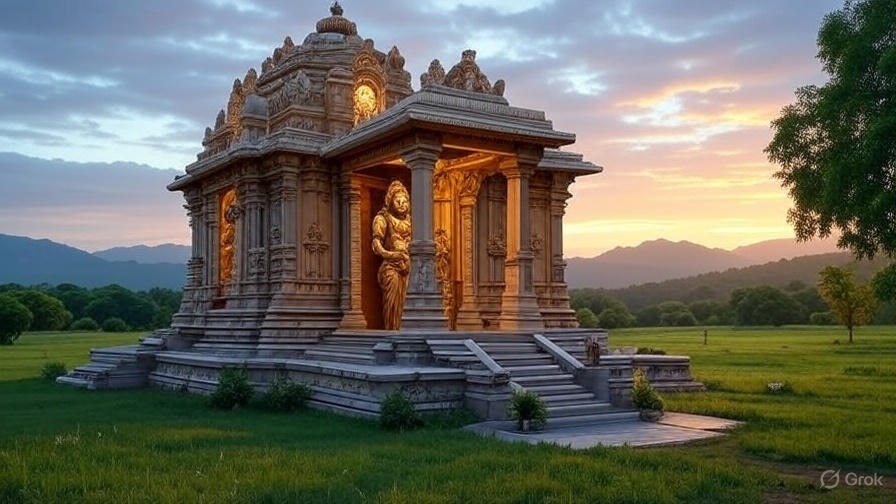IIT Roorkee has made an interesting discovery with Amrita Vishwa Vidyapeeth (India) and Upsala University (Sweden). Research has found that the eight famous Shiva temples of India are not only religiously important, but they are also deeply associated with the zone of natural resources. This study has been published in Humanities and Social Science Communications (Nature Portfolio).
Research has reported that these temples from Kedarnath (Uttarakhand) to Rameswaram (Tamil Nadu) are built on a narrow line in North-South, which is called Shiva Shakti Axar (SSAR) and is located around 79 ° E. Meridian.
Use of modern science
Related news
Researchers analyzed satellite data, geopolitical modeling and environmental productivity found that SSAR zone is extremely suitable for water, probability of renewable energy and agricultural production. Although this zone is only 18.5% of the entire study sector, it has a capacity to produce 44 million tonnes of rice annually and can produce renewable energy of 597 GW. This is more than India’s current total renewable capacity. Explain that renewable ability is called some things or resources that can be used repeatedly and they automatically re-form in nature, such as the energy of the sun, air or water.
Resources around temples
Research also saw that the places of different temples were selected according to different natural resources. Temples of North India such as Kedarnath, water and hydropower are in a favorable place for development. Temples of South India, such as in Tamil Nadu, are suitable for solar and wind energy. The research team says that the temple makers probably chose these places with the understanding of environment and resources, that is, the religion and resource plan.

Opinion of experts
Pro. K.S. Kasiviswanathan, Major researchers at the Department of Water Resources Development and Management (WRDM) of IIT Roorkee say that this research shows us that ancient Indian civilizations had a deep understanding of nature and sustainable development, which helped them choose a place for major temples.
Symbolism and practical knowledge
Research also showed that there is a relationship between the symbols and environmental plans of temples. Many Shiva temples represent the five elements (Panchabhuta) i.e. earth, water, fire, air and sky. It shows that temples were built not only on the basis of spiritual but also environmental understanding. Researchers believe that the plan of temples included astronomy and mythological legend as well as practical and empirical knowledge, which progressed from generation to generation.

Civilization and sustainable development
Pro. Kamal Kishore Pant, Director of IIT Roorkee says that by bringing out the scientific reason behind the place of holy temples, we are only increasing academic understanding, but also showing how knowledge of India’s ancient civilization can be used in sustainable development and environmental plan today. This research shows that ancient knowledge and modern science can complement each other.
Continuity of land and water
It was also seen in this research that despite the changes of centuries, there is continuous continuity in the form of land and rain patterns. Archaeological evidence found from places like Vagai and Poruna river valleys show that water, agriculture and stable land were taken care of in the temple construction. This proves that temples are not only religious but also symbols of civilization.
What did the research team get
Bhabesh Das, Lead Author and IIT Roorkee research scholars say that our findings show that the builders of the ancient temples were not only on the basis of reverence, but also the environmental planner with an understanding of land, water and energy resources. Pro. Thanga Raj Chelliah, Head of the WRDM department says that it is a wonderful interdisciplinary cooperation, which connects heritage and water resources. This shows how important it is for the sustainable development of the future to re -understand the ancient practices from modern equipment.
Our heritage is special
This research reminds us that India’s cultural heritage not only holds religious and cultural significance, but also hidden useful knowledge for environmental strategy and climate flexibility. This can be understood and implemented in modern development and sustainable scheme.
—- End —-

